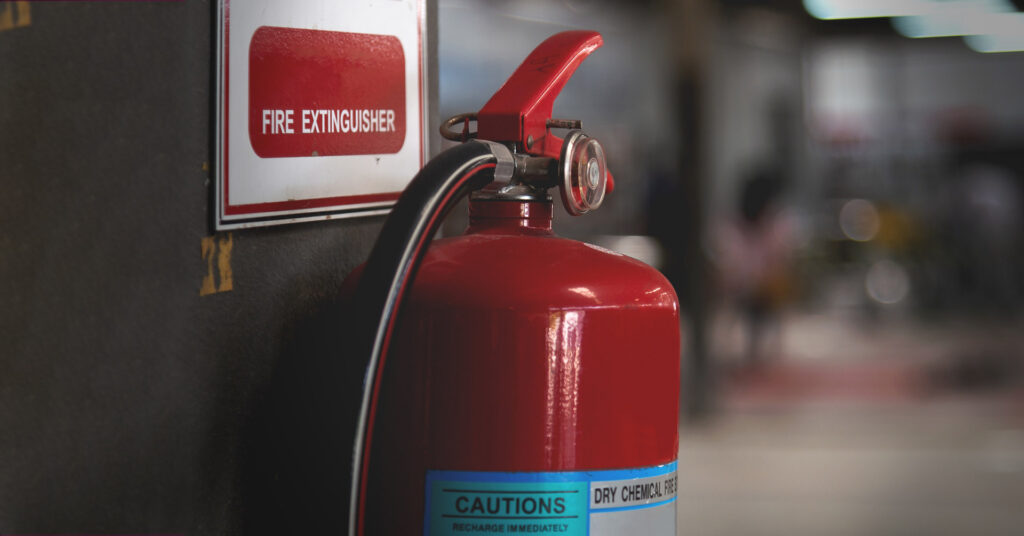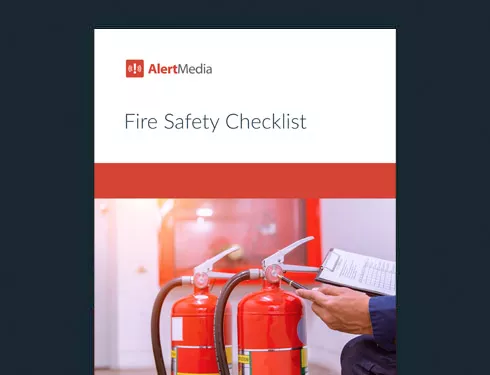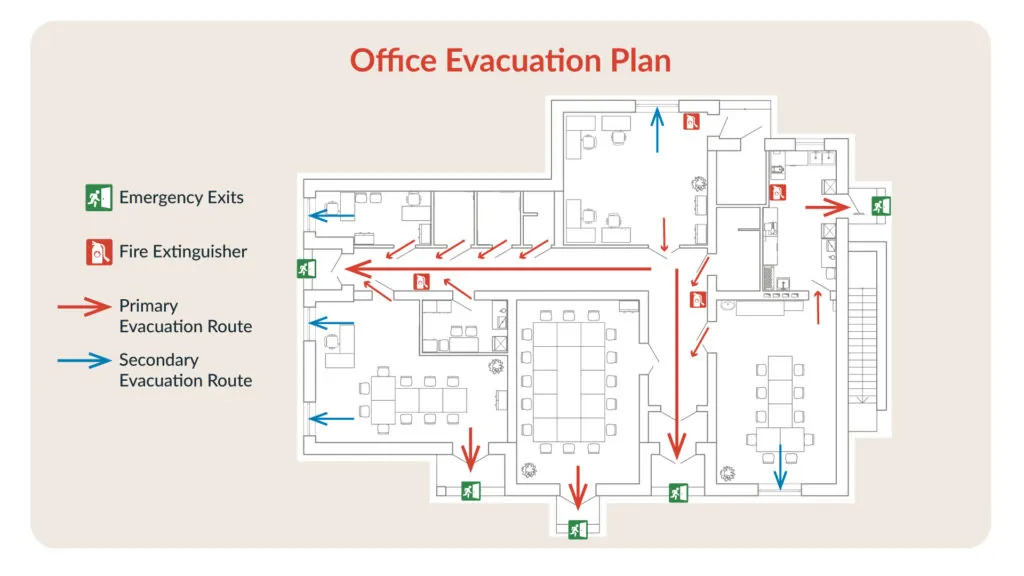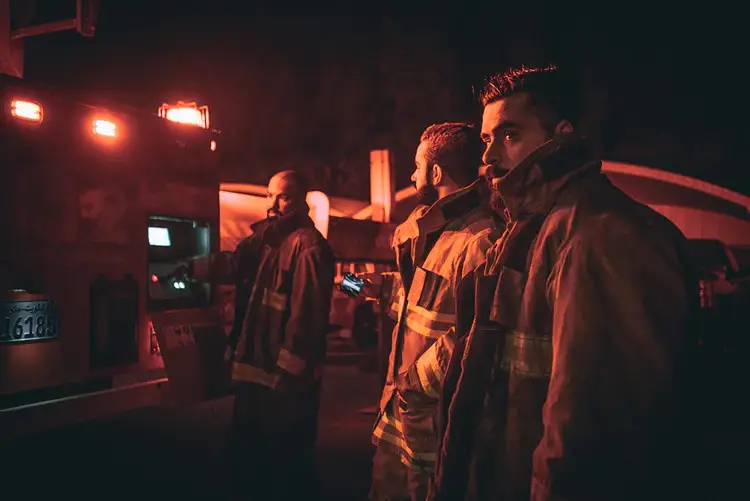
Workplace Fire Safety: 8 Prevention Tips
Workplace fires are devastating to life and operations. Protect your organization from the flames with our life-saving fire prevention tips.

Workplace fires put businesses and their employees at significant risk every year. In 2022 alone, the U.S. had more than 140,000 non-residential structure fires, resulting in more than $4 billion in property damage and losses, according to the National Fire Protection Association (NFPA). Few scenarios are more frightening than a workplace fire. Unpredictable, life-threatening, and difficult to recover from, a major fire in the workplace can disrupt operations for weeks or even months. Not to mention, your people’s lives are on the line, and it’s your responsibility to protect them. Protecting your organization from the threat of fires begins with prevention and basic fire safety. While some situations are out of a company’s control (wildfires or arson, for example), most workplace fires can be avoided by understanding fire hazards, taking precautions, and creating an emergency action plan.
Whether you are creating a new fire safety program for your business or want to ensure your organization is covered, here are eight workplace fire safety tips that can help you prevent and mitigate the risk of fire to your people and operations.
Download Our Fire Safety Checklist
8 Workplace Fire Safety Tips: Prevention & Response
1. Assign fire safety roles
If your organization hasn’t assigned at least one person (ideally a team of people) to oversee fire safety, this should be its first priority.
Every business should find at least one person to serve as their fire warden. Some candidates who might make sense for the role include your company’s office manager, facility manager, safety manager, or human resources manager.
This person or team should clearly understand what conditions might lead to a workplace fire and how your organization currently sizes up.
Fire warden tasks:
- Assist in implementing and improving effective emergency procedures in your workplace
- Conduct regular inspections and a thorough walkthrough of your company’s workspace to assess potential fire hazards
- Raise awareness (with both leadership and staff) about existing fire hazards
- Document risk areas and work with leadership to follow safety standards and implement safety measures
- Help prevent emergencies by evaluating fire risk control measures
- Educate employees on how to follow the emergency plan
- Plan and execute regular fire drills
- Continue with routine fire prevention walkthroughs
Remember that assigning a specific person responsible for workplace fire risk and prevention is important.
Other fire safety tasks:
Someone needs to be in charge of overall fire prevention efforts. However, fire planning can become complicated if your organization has more than 50 people. You’ll need to build a team of responsible individuals who can help the fire warden with essential tasks. Delegate the following responsibilities:
- Maintain accountability of individuals and reporting to leadership
- Ensure doors are closed and evacuation routes are clear
- Assist mobility-impaired staff
- Ensure affected areas are clear
- Collect stragglers during evacuations and drills
2. Maintain clear evacuation routes
One essential element of workplace fire safety is keeping all evacuation routes unobstructed at all times. Fires usually have little warning, and employees need to be able to exit the building quickly and safely. Blocked exits or hallways can become dangerous bottlenecks that put people at significant risk. Regularly inspect all exit paths and emergency doors to ensure they remain free of clutter, equipment, or storage items.
- Conduct weekly walkthroughs to check for any items obstructing exits or hallways.
- Clearly mark all exits with illuminated signs to improve visibility.
- Post maps of escape routes in common areas, like break rooms and hallways.
- Designate personnel to ensure these routes remain accessible during emergency situations.
3. Identify risks in the workplace
You can extinguish the threat of most workplace fires well before the initial spark. There are a variety of factors that place a business at higher risk of a fire incident. To educate every employee, the National Fire Protection Association (NFPA) lists some of the most common causes of workplace fires. While the following list is not comprehensive, it does cover the most common workplace fire hazards:
- Cooking appliances
- Electrical equipment like extension cords
- Power strips, overloaded outlets, and other electrical hazards
- Lighting equipment
- Heaters
- Arson
- Smoking materials
- Office/entertainment equipment
Common causes of workplace fires

Source: FEMA
Your fire warden should conduct a thorough walkthrough of your organization’s structure, critically examining the high-risk areas listed above. Once they have identified a potential hazard, they should develop plans to fix the issue, build employee training on proper use, or remove the risk entirely.
4. Pay attention to fire-prone areas
Because factors vary from industry to industry, no workplace fire safety panacea will work across the board. That said, common areas within many conventional work environments should be viewed as higher risk.
Just under one-fifth of reported workplace fires started in an office kitchen or cooking area. Any structure with a kitchen containing a toaster oven, microwave, or heating appliance is vulnerable.
It should also be noted that while only 15% of fires were caused by electrical problems, those fires caused 46% of direct property damage. Of course, every area of the office should be given equal attention, but it’s helpful to understand fire-prone areas of your workspace and what points of origin produce the most damage.
Every business should also take general workplace safety precautions to lessen the impact of a fire. These include minimizing loose paper throughout the office, properly storing flammable materials, and instructing all employees on fire response prevention and protocol.
Maintain functional appliances (in the kitchen and elsewhere) and conduct routine electrical inspections to help mitigate the risk of a fire incident.
5. Regularly inspect and maintain fire equipment
Fire prevention and response necessitates having functional, up-to-date equipment. That’s why maintenance is crucial. Fire extinguishers, smoke detectors, and fire alarms help prevent small fires from growing into serious incidents. However, these tools are only effective if they are in good working condition. Regularly inspect and maintain all fire safety equipment to ensure it will function if needed. Here are a few tasks to keep up with:
- Schedule monthly checks of fire extinguishers to confirm they’re charged and accessible.
- Test smoke detectors and alarms every six months, replacing batteries as necessary.
- Conduct annual inspections of sprinkler systems to ensure they meet regulatory standards.
- Train employees on the proper use of fire extinguishers and other equipment.
In addition to routine maintenance, consider establishing a schedule for professional inspections by certified fire safety experts. These specialists can thoroughly assess your fire safety equipment and systems, ensuring compliance with local regulations and identifying potential issues that may not be immediately visible. For example, sprinkler systems require specific expertise to test pressure and functionality, which can prevent costly failures in an emergency. Moreover, professionals can offer valuable guidance on equipment upgrades or replacements as technology advances, keeping your workplace equipped with the most effective fire prevention tools. Integrating regular professional inspections into your safety plan bolsters your facility’s resilience against fire incidents and reinforces your commitment to employee safety.
6. Understand industry needs
In 1991, a poultry plant in Hamlet, North Carolina, with 90 employees inside, went up in flames. One of the plant’s deep fryers ignited a fireball that quickly spread throughout the structure. Many of the emergency exits were locked, the building’s fire sprinkler system and other fire suppression systems failed, and the company had no fire evacuation plan.
Sadly, 25 workers perished in the fire.
In its 11 years in operation, the plant had never received a proper safety inspection. The company could have mitigated the loss of life if the facility had been equipped with a fire extinguishing system, functional exits, and a rehearsed evacuation plan.
Businesses will have specific industry considerations regarding fire safety. For example, the Hamlet poultry plant required a specialized carbon dioxide fire extinguisher above its fryers that would likely not exist outside of a food manufacturing or restaurant environment.
The banking industry, with a dispersed office environment, will have multiple branches to consider. In addition to bank tellers and employees, banks will need to protect customers in the event of a structural fire.
Similarly, the healthcare industry has a wide variety of staff (nurses, doctors, technicians) and patients to consider in the event of a fire. Evacuation is rarely the best option for hospitals since many patients cannot get to safety. That’s why prevention is so crucial in the healthcare industry. AlertMedia’s Hospital Fire Safety Checklist is designed to help do just that.
Understanding the industry-specific fire risks your place of business faces is essential to maintaining a safe work environment.

7. Educate employees on fire safety guidelines
The Occupational Safety and Health Administration (OSHA) requires organizations to follow strict fire safety and evacuation guidelines, depending on the specific industries and hazardous materials present. In addition, businesses have a duty of care to their employees. This legal and moral responsibility requires that employers do everything within their power to keep their people out of harm’s way.
But regardless of the legal obligation, every organization should be committed to a safe working environment. And that begins with education.
The following OSHA fire prevention guidelines can help businesses fulfill their duty of care and train employees on fire prevention and safety.
Every organization’s fire prevention plan should be done in writing, posted visibly in the workplace, and made available for all employees to review. Some key components:
- Clearly articulate all significant fire hazards.
- Instruct employees on how to properly handle and store hazardous materials.
- Educate employees on potential ignition sources and their control.
- Communicate what fire protection equipment is in place to handle each significant hazard.
- Point out the location of posted signage, like exit signs.
- Demonstrate proper use of safety equipment like portable fire extinguishers.
- Communicate evacuation protocol and how to use your company’s fire alarm system and emergency notification system.
- Include procedures to control the accumulation of flammable liquids and combustible waste materials.
- Include safeguards on heat-producing equipment to prevent the accidental ignition of combustible materials.
- Develop a list that contains the names/job titles of internal fire safety wardens.
Employers must inform their employees of any fire hazards they could be exposed to while performing their jobs. In addition, employers should review the fire prevention plan with all employees.
8. Use fire safety resources
Protecting your business from workplace fires starts with understanding the risks your organization faces. The task might feel overwhelming, so guided fire safety resources are a great starting place.
If fires could threaten your people’s lives (and there are few instances where everyone is completely safe), you can’t afford to overlook any step of fire preparedness. AlertMedia’s fire safety checklist is pre-built to cover every aspect of fire preparedness for businesses, from tools and equipment like fire detection systems and smoke alarms to communication and review strategies for pre- and post-fire efforts.
Part of that checklist will require you to create and post a fire evacuation plan, including a floor plan, so employees have an accessible visual aid to remind them of escape routes in a fire emergency. This fire evacuation plan should be custom-made for your business and its precise layout, but our template can help you start on the right path to developing your own.

Prevention Starts Today
Our eight tips above all have one thing in common: You must check them off before a fire breaks out at your workplace. You’ll probably never know when a fire will spark, so you need to prioritize activating these elements of a fire prevention plan to be ready without warning.





